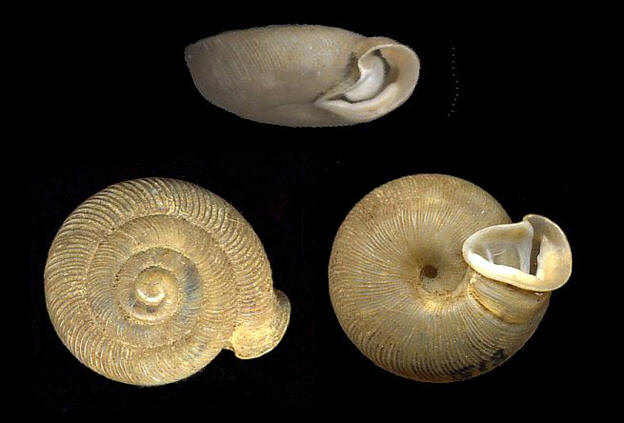Adaptation
Daedalochila hippocrepis
belongs to a large group of a mostly terrestrial snails called
the Pulmonates. This group has specific adaptations that can be
linked to those found in the horseshoe liptooth such as the
ability to breathe air. Air-breathing is due to the reduced
gills and the mantle cavity taking the role of a lung-like organ
(Thorp, 2011). This offers an
advantage to the Pulmonates because they do not have to rely on
water for oxygen, but can breathe dry air (Nordsieck,
2010). They do, though, have to maintain moist conditions
within their cavity. To do this aquatic Pulmonates have the ability to
climb out of the water to acquire oxygen (Thorp,
2011), and can either float on the water’s surface due to
surface tension of water or climb up plants (Nordisieck,
2010).

Certain adaptive characteristics are specific to the family in which D. hippocrepis belongs, Polygyridae. These include the nonexistence of a dart apparatus or the “love dart” which is a calcium carbonate structure that plays a role in mating practices (Nordisiek, 2010). Polygyridae jaws are ribbed and this family of snails shows a lack of a stimulatory organ and diverticulum (Enyclopedia of Life, 2012).
The horseshoe liptooth can also be linked to the characteristics of the genus it belongs to, Daedalochila or previously, Polygyra. The “liptooths” as they are known, have a characteristically complex aperture. It was found that the aperture of Daedalochila originally existed as a three-toothed aperture. Secondarily, the emergence of the one-toothed and toothless forms was seen (Academy of Natural Sciences, 1930). These modifications could have come about to better suit the snail for its environment. General shell characteristics across the genus Daedalochila are depressed spire, broad lip tooth, and slowly expanding whorls (Auffenberg, 1989).
While the specific information of D. hippocrepis is unknown, due to its linkage to the Pulmonates, the family Polygyridae and the genus Daedalochila it is likely that the horshoe liptooth possesses the above adaptations.
Next is Nutrition!